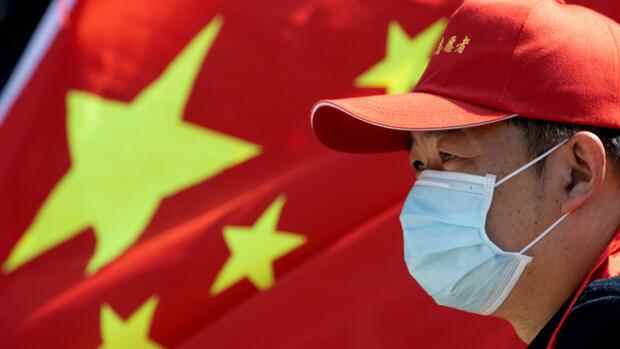How the crisis in the electricity market will develop will also depend on whether the Chinese government intervenes.
(Photo: dpa)
Qingdao The official, state-recorded purchasing managers’ index for the manufacturing sector in China slipped below the 50 mark in September, which indicates that sentiment has deteriorated. As the National Statistics Office in Beijing announced on Thursday, the value was only 49.6 points and was therefore worse than expected.
The mood in China’s manufacturing industry last turned negative at the beginning of the corona crisis in February 2020. At that time, however, the official purchasing managers’ index had dropped significantly more to 35.7 points.
Zhao Qinghe from the National Statistics Office named the low performance of energy-intensive industries as one of the reasons for the poor performance. Observers also see the turbulence in the real estate sector as well as increased local outbreaks of Covid cases and the associated draconian measures by the authorities to combat the virus as the cause.
Since August there has been a significant reduction in electricity supply in more than 20 provinces. Factories were shut down, particularly in the economically strong south and north-east of the country; Residents sat in the dark for hours, even traffic lights and elevators were switched off for hours because there was no electricity.
Top jobs of the day
Find the best jobs now and
be notified by email.
The first companies reported production stoppages, and the local German economy is also affected. Two main factors are considered to be the reason for the electricity bottlenecks: First, a coal shortage, which was caused, among other things, by the import ban on Australian coal. Second, the attempt by some provinces to meet the strict energy efficiency targets set by the Chinese leadership by the end of the year by simply turning off the electricity in the factories.
The purchasing manager index for the manufacturing sector, compiled by the Chinese business magazine “Caixin”, turned out somewhat better: It rose from 49.2 in August to 50 in September. The company survey always takes place in the second half of the month.
Corona and lack of shipping capacity
However, the value suggests that downward pressure on the economy remains high, said Wang Zhe, an economist with Caixin Insight Group. The spread of the corona virus continued to affect demand, supply and circulation in the manufacturing sector. The situation of the epidemic overseas and the lack of shipping capacity also depressed overall demand, said Wang.
How the crisis in the electricity market will develop will also depend on whether the Chinese government intervenes. “Now that the electricity shortage is making headlines in the Chinese and international media, the regulatory authorities will use all means to temporarily restore the supply of thermal energy,” says Yan Qin, an expert on coal at the research company Refinitiv. For example, they could ask the coal mines to increase their production, cap coal prices and raise electricity tariffs for certain customers.
All of these measures could lead to a reduction in power outages, at least in the short term, but it also depends on how hard the winter gets. Then there could be widespread failures in China again.
“Measures are already being taken to alleviate the problem, but solid measures could be a long time coming before the central business meeting in December,” says a recent analysis by the French bank BNP Paribas. The analysts assume that the electricity shortage will persist until spring 2022.
More: Power outages and delivery bottlenecks: After Evergrande, China’s economy threatens the next danger
